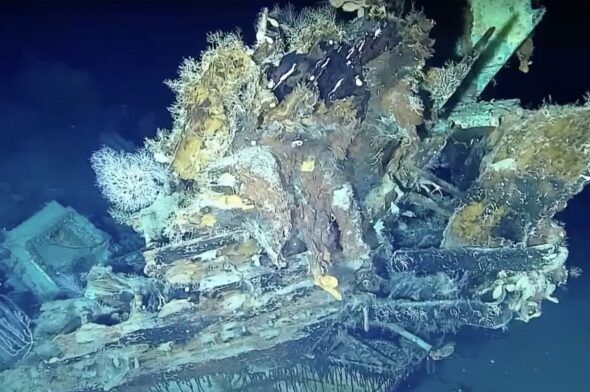 At the Bottom of the Sea
At the Bottom of the Sea
A Mediterranean that changes its weather character
In recent years the Mediterranean has shown a new and in many ways unknown character
The extraordinary storm of October 2018, the violent thunderstorms that occurred in Corsica last summer, the meteorological anomalies of a mild and anticyclonic autumn for long periods, the rarest perturbations of atlantic origin, the high sea surface temperature and many other indicators suggest that the weather in the Mediterranean has indeed changed character. This trend has become more evident in recent years.
Operating in the field of weather services and having a daily dialogue with the various players of the marine industry allows for frequent and timely feedback on what is happening. Entering into the merits of climate change, on a global scale, is a topic that needs to be explored by climatologists, but taking note that in recent years the Mediterranean has shown a new and in many ways unknown character is a topic debated not only by researchers but by “sea people”.
Interacting with the captains of yachts and ships, with the operators of ports and marinas, with the professionals of the works and maritime transports, we realize how important it is today to understand this change in relation to the operational decisions that everyone must take in the own sector. Even the most experienced fishermen, who on board a fishing boat have always been used to catching the signs of a change in the weather on the horizon through their sensitivity and observation skills, say they are surprised and in difficulty.
For this reason, having dedicated my professional commitment to navigation and to the weather services for navigation, I decided to introduce here some points relating to the understanding of the weather on the Mediterranean that certainly deserve to be explored.
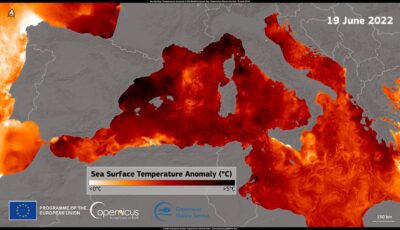
The extreme temperatures of the Mediterranean Sea surface – Credit: European Union, Copernicus Marine Environment Monitoring Service
With a changing weather, the techniques of meteorological navigation change
If the weather behaves abnormally, then inevitably the techniques and decisions of meteorological navigation have to adapt to this. Experience has taught us which routes and shelters are the safest in conditions of the prevailing winds flows, with the Mistral, the Libeccio, the Scirocco and with the other winds of the Mediterranean. The arrival of a storm, thanks to the increasingly detailed weather models and bulletins, is generally well “photographed” by the various meteorological centers. The alternation between perturbed weather systems and manageable conditions is a rather usual element but what is surprising today is the frequency of intense local phenomena such as thunderstormand and downbursts, in formation and very rapid movement, which often develop in manageable weather conditions. This is a factor that may surprise many.
Forecasting and Nowcasting
The two meteorological weather techniques travel in parallel and are constantly integrated. The forecasts of the models and bulletins indicate the marine weather conditions expected on a specific sea area in the next 6/12/24/48 hours, up to 5 days, the nowcasting points instead through the satellite images, the radar, the lightning detector and observations to identify and follow the development, displacement and intensity of the storm phenomenon. In the Mediterranean, especially when the weather is changing, it remains risky to go beyond the 5-day forecast outlook.
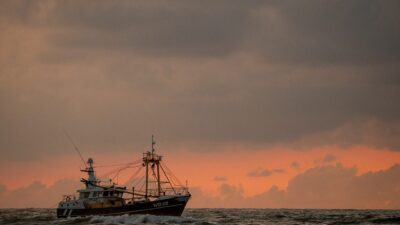
Fishing boat – Photo by Wim van’t Einde
Weather Warnings and Communication Systems
Today there are more technologies and systems to follow a squall line in its development and movement, the mariner who has the possibility to connect to the internet can carry out a weather monitoring in his area, especially if he is in a bay at anchor and even if the bulletins and models are not so clear in indicating a risk of thunderstorms. What weather centers and companies focus on solutions to communicate critical alerts related to the units position and system movement.Technologies exist and this can help mitigate the risk that, as happened on the coasts of Corsica last August 18, the boats are surprised by the violence of the phenomenon.
The seasons of marine weather
Consulting the climatological data or the “pilot charts” to determine which conditions are statistically more frequent in a given period of the year often highlights marked differences with respect to the weather evolution we are observing. The air and sea surface temperatures, the prevailing winds, the frequency of storms and the state of the sea differ frequently and clearly with what the experience of recent years has been teaching us. In some ways, it is as if the seasons crossed one another on the meteorological calendar. For example, autumn is the period on our seas characterized by the passage of extensive perturbations from the Atlantic Ocean, the risk of big swells and precipitation and instead shows extended anticyclonic periods with weak gradient.
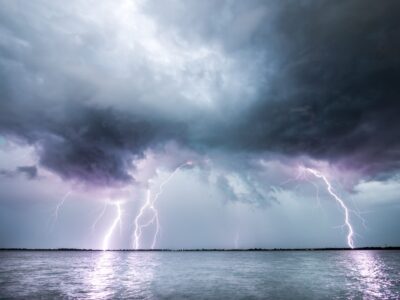
Lightning – Credit: Raychel Sanner
Training and knowledge exchange
All sailors, for pleasure or profession and all worker in the maritime industry, follow, with different levels of detail, the theme of marine meteorology and oceanography. This chapter is an integral part of navigation training and preparation. Everything else is learned on board. Classical manuals focused on understanding the evolution of marine weather on the basis of modern theories and techniques. The evolution of technologies, which make available to everyone more tools and information, and the need to react and decide according to the critical weather conditions, has led the various training centers for navigation to adapt and update their courses with modules of “practical weather”.
Navimeteo collaborates with the “Accademia della Marina Mercantile” and with “La Belle Classe Academy” of the Yacht Club of Monaco, as well as with other training centers and sea schools, with the aim of sharing what has been learned in the daily operational life of maritime services and to complement the study of the principles and techniques for understanding sea weather. The acquisition of the method and the knowledge of the usefulness and limits of weather information are topics accessible to all through participation in meetings and practical courses. The priority is safety at sea. Statistics indicate that 30% of navigation accidents are due to heavy weather situations. Marine meteorology must be considered a real “safety equipment” on board.
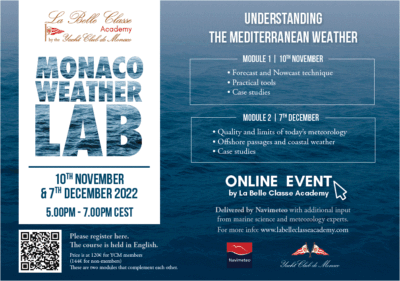
MONACO WEATHER LAB – Weather Training
Video: Portoferraio Bay (lightning and thunderstorms) – Credit: Marco Mensa
Gianfranco Meggiorin
Leave a Reply
1 commento
You might also be interested in
 At the Bottom of the Sea
At the Bottom of the Sea
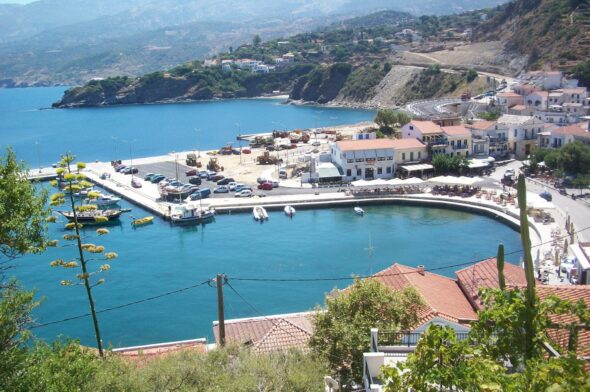 Rose Island
Rose Island
The Greek island where people forget to die wants to become Austrian
The incredible story of Icaria, in the Aegean Sea, where the inhabitants’ favourite sport is waking up late in the morning
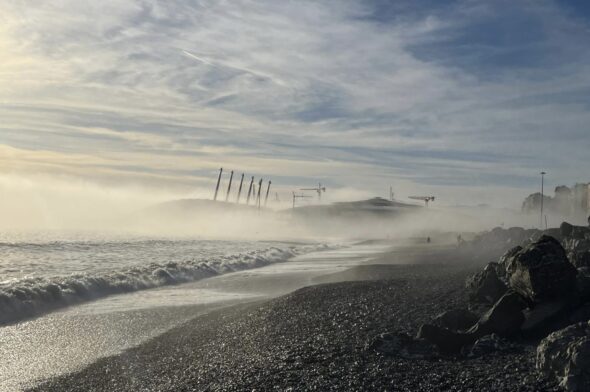 Weather forecast
Weather forecast
The Caligo, the fog of Genoa
Technically it is an advection sea fog, the kind of fog that condenses when a warmer and more humid air mass flows very slowly over the cold sea
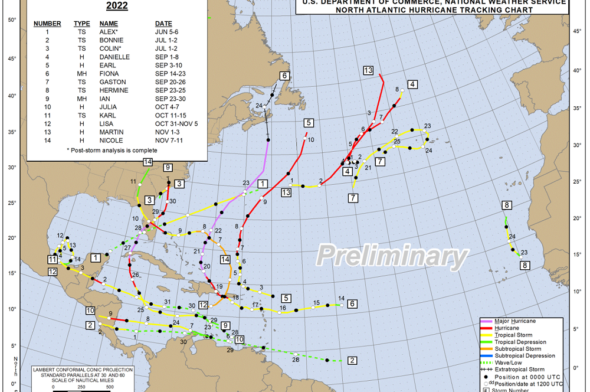 Weather forecast
Weather forecast
Understanding the weather at sea: the most important thing? Two people talking to each other
The fundamental principles, what I like to call the rules of the weather alphabet and weather navigation, are always the same. Tools and techniques have evolved
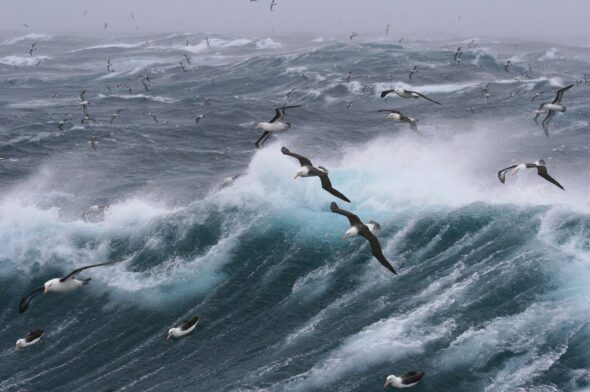 Weather forecast
Weather forecast
Simple rules to understand the wind at sea
The wind is the true protagonist of the sea weather: the navigation conditions and the state of the sea depend on its strength and direction
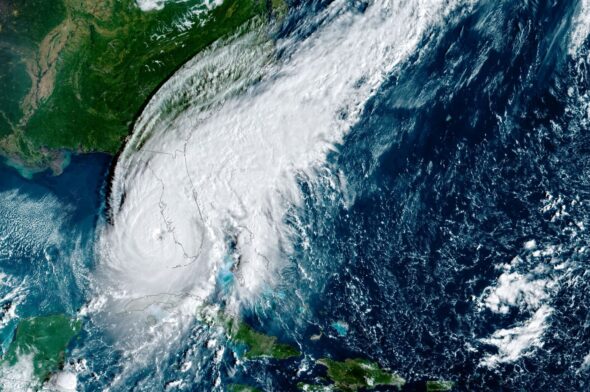 Weather forecast
Weather forecast
How ships escape the fury of hurricanes
How the world of cruise ships, yachting, maritime transport and ports coordinate to manage the criticalities that these phenomena can generate




Very interesting article not only for sailors, it is increasingly important to carefully monitor the marine weather evolution with the help of new warning services.